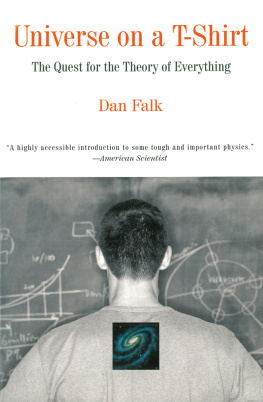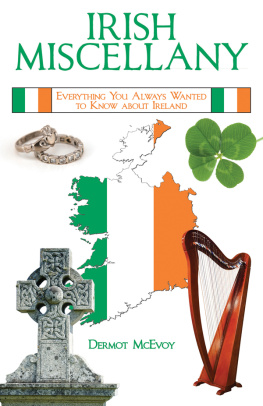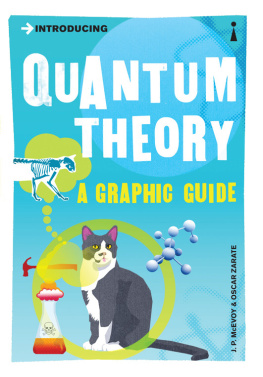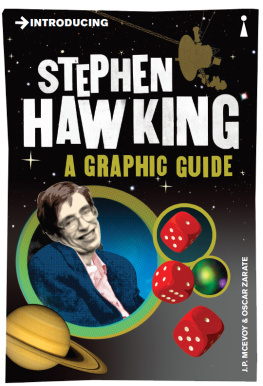J.P. McEvoy was awarded an Msc in physics from the University of Pennsylvania and a PhD from the University of London. As a research associate at the RCA Research Laboratories in Princeton and for the next 15 years, he worked in solid state physics as a research scientist in the US, Switzerland and the UK. His two previous books, Introducing Stephen Hawking and Introducing Quantum Theory have been acclaimed worldwide and translated into a dozen languages. He has also written a popular book on the history of solar eclipses for Fourth Estate. Recently, he has been active in science journalism and broadcasting. JoeMcevoy@mac.com.
Titles available in the Brief History series
A Brief History of 1917: Russias Year of Revolution
Roy Bainton
A Brief History of the Birth of the Nazis
Nigel Jones
A Brief History of the Circumnavigators
Derek Wilson
A Brief History of the Cold War
John Hughes-Wilson
A Brief History of the Crimean War
Alex Troubetzkoy
A Brief History of the Crusades
Geoffrey Hindley
A Brief History of the Druids
Peter Berresford Ellis
A Brief History of the Dynasties of China
Bamber Gascoigne
A Brief History of the End of the World
Simon Pearson
A Brief History of the Future
Oona Strathern
A Brief History of Globalization
Alex MacGillivray
A Brief History of the Great Moghuls
Bamber Gascoigne
A Brief History of the Hundred Years War
Desmond Seward
A Brief History of Medieval Warfare
Peter Reid
A Brief History of Misogyny
Jack Holland
A Brief History of Medicine
Paul Strathern
A Brief History of the Private Lives of the Roman Emperors
Anthony Blond
A Brief History of Science
Thomas Crump
A Brief History of Secret Societies
David V. Barrett
A Brief History of the Age of Steam
Thomas Crump
A Brief History of Stonehenge
Aubrey Burl
A Brief History of the Vikings
Jonathan Clements
A BRIEF HISTORY OF
THE UNIVERSE
J.P. McEVOY

Constable & Robinson Ltd
3 The Lanchesters
162 Fulham Palace Road
London W6 9ER
www.constablerobinson.com
First published in the UK by Robinson,
an imprint of Constable & Robinson, 2010
Copyright J.P. McEvoy, 2010
The right of J.P. McEvoy to be identified as the author of this work has been asserted by him in accordance with the Copyright, Designs and Patents Act 1988
All rights reserved. This book is sold subject to the condition that it shall not, by way of trade or otherwise, be lent, re-sold, hired out or otherwise circulated in any form of binding or cover other than that in which it is published and without a similar condition including this condition being imposed on the subsequent purchaser. A copy of the British Library Cataloguing in Publication Data is available from the British Library
UK ISBN 978-1-84529-684-1
1 3 5 7 9 10 8 6 4 2
First published in the United States in 2010
By Running Press Book Publishers
All rights reserved under the Pan-American and International Copyright Conventions
This book may not be reproduced in whole or in part, in any form or by any means, electronic or mechanical, including photocopying, recording, or by any information storage and retrieval system now known or hereafter invented, without written permission from the publishers.
9 8 7 6 5 4 3 2 1
Digit on the right indicates the number of this printing
US Library of Congress Control Number: 2008931539
US ISBN 978-0-7624-3622-4
Running Press Book Publishers
2300 Chestnut Street
Philadelphia, PA 19103-4371
Visit us on the web!
www. runningpress.com
Printed and bound in the EU
The author dedicates this book to the genius and compassion of Johannes Kepler, the worlds first astrophysicist, and Albert Einstein, the worlds first theoretical cosmologist...
And to my four grandchildren: Emily, Muirenn, Joel and Leelah who have promised me that they will take good care of our tiny part of the universe, the earth.
CONTENTS
LIST OF FIGURES AND ILLUSTRATIONS
ACKNOWLEDGEMENTS
To my wife Patricia, companion for half a century, goes my gratitude for her total acceptance of this project. She gave me the greatest gift a husband could have to follow a dream: a two-year sabbatical from marriage to be a recluse while she used her talent and experience in Ethiopia to help modernize the countrys educational system.
I would also like to thank three generous women who helped me during the two years of this books gestation:
Nicole on the sunny Kent coast for her support and chicken soup; Louisa in wet Glasgow for proofreading and encouragement; and Cynthia in leafy Hampstead for a writers sanctuary in the final stages.
To my editor and friend, Leo Hollis, I offer my sincere thanks. He deserves most of the credit for the existence of this book. In addition to securing this prize commission for me in the first instance, he has advised, cajoled and creatively criticized my many false starts and final drafts. Over the past two years, as I groped my way through forty centuries of stargazing and theorizing, his erudition, discipline, saintly patience and love of history were indispensable. He instilled in me the confidence that I could encapsulate the main elements of this remarkable story in 100,000 words or so. I probably will never tackle anything like this again. That is, unless Leo Hollis asks me to. But where do we go from here?
I would finally like to acknowledge the continuous support of my wife and three sons, who have never lost faith in me. In order to hold my own in this creative family, I had to do something special. Unlike Bill Starbuck, Im no good at rainmaking. So I wrote this book about the universe instead.
Special thanks to:
Jenny Doubt for being a painstakingly accurate copy-editor; and Mark McEvoy for preparation of the illustrations under intense deadline pressure albeit in the salubrious surroundings of the Tuscan hills.
Ptolemy made a universe, which lasted fourteen hundred years.
Newton also made a universe, which has lasted three hundred years.
Einstein has made a universe, and I cant tell you how long that will last.
George Bernard Shaw
(Introducing Einstein at the Savoy Hotel in London, 28 October 1930)
PREFACE
Who has not watched nightfall, when the Sun slowly descends below the horizon and, after several minutes, is enveloped in darkness. At that moment the scattering of sunlight by the Earths atmosphere gives way to a transparent sky. Stars, galaxies, planets and moons, quasars and pulsars appear. Humans have been studying these celestial objects since the beginning of life itself, and it is at this hour that astronomy enthusiasts are poised with their telescopes, binoculars and cameras to study the heavens, visible in all its glory.
Stargazers are joined in a noble and 4,000-year-old ancient tradition of exploring the night sky. This pursuit began as astrology, when our ancestors attempted to describe what they saw in order to read omens and prognostications. This fearful probing of the stars then developed into astronomy, and now has become cosmology the study of the universe as a whole. Initially, the stargazers aim was to record the changing face of the skies through the days, months, seasons and years. It was only later that a more complex explanation was sought, and models and plans of how the planets and stars moved in relation to each other were developed.
Next page









